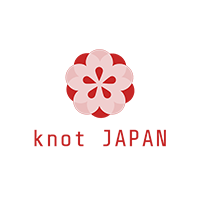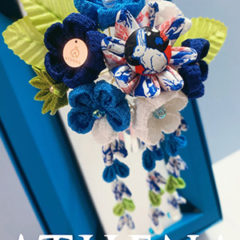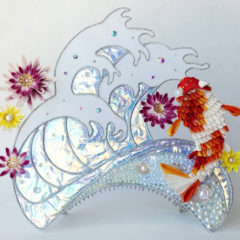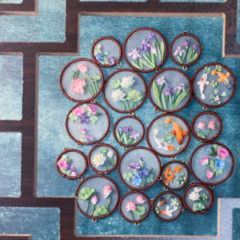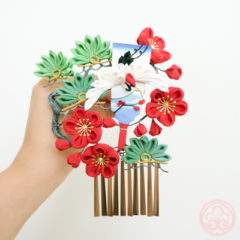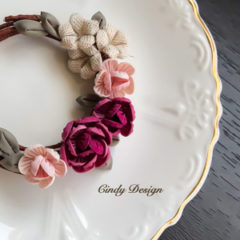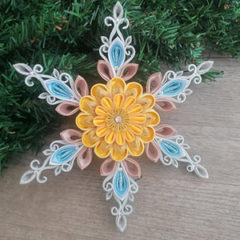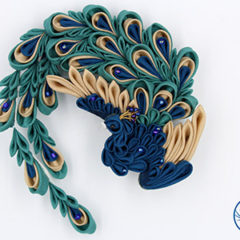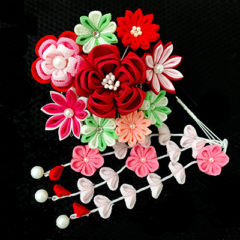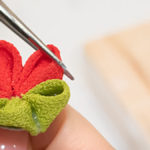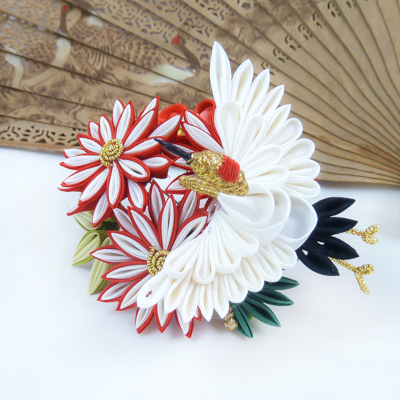
The famous Tsumami-zaiku artists will talk about their thoughts about Tsumami-zaiku.
The third Tsumami-zaiku Artist is Polish artist Kinga Ozarska. She is fascinated by Japanese art and culture, including kimono, and is engaged in spreading Japanese culture with her unique sense of art.
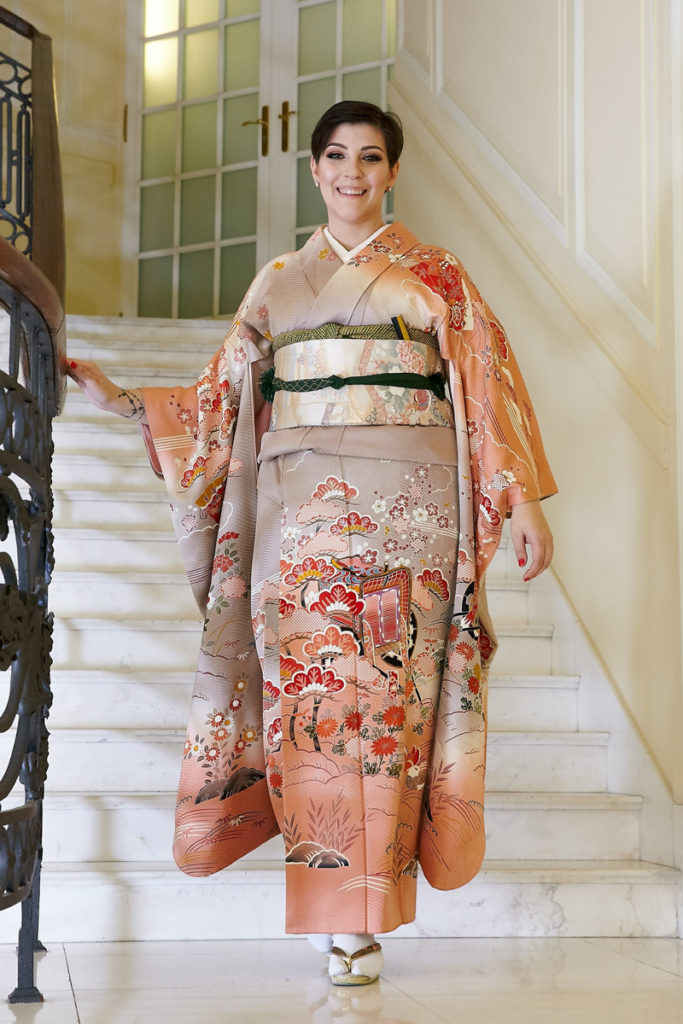
Profile
2008 – started making tsumami zaiku kanzashi as Arleen on Deviantart
2009 – started learning kitsuke
2010 – prelection on the art of kitsuke, Japanicon 2010, Poznań
2011 – first workshop during Animatsuri convention, Warsaw, Poland
2012 – started the Kisetsubana project meant to make at least one kanzashi for each month of the year (in progress)
2013 – founded Kimono de Jack Warsaw meeting in Poland
2013 – an exhibition of works and workshops in Manggha Museum, Kraków, Poland followed by a newspaper article about my work in Gazeta Wyborcza
2013 – works features at an exhibition “Japan’s Eternal Flowers” at the Information and Culture Department of the Japanese Embassy, Warsaw
2015 – started a company under the brand name Wisteria Gardens
2015 – interview in the “Otaku” magazine, Poland
2018 – an exhibition of works during Pyrkon convention in Poznań
2019 – an exhibition of works during XIII Annual Japanese Days in Łódź
Facebook: https://www.facebook.com/wisteriagardensstudio/zashi/
Shop Site: https://en.wisteriagardens.eu/

Q1. How did you start working on Tsumami-zaiku? (Or did you get involved?)
I started as many enthusiasts, with popular culture. Still, I quickly turned to explore traditional aspects of Japanese art like kitsuke (kimono dressing) and artisan crafts. I discovered the art of tsumami- zaiku by noticing the elaborate hair accessories of maiko in Kyoto and young women during graduation ceremonies. I wanted to know more about both kimono and kanzashi and thought to try to make one might help me understand it better. After the first attempt at making a tsumami kanzashi, I tried to make another one, just better, and another one after that. Soon, I started a workshop in one of my rooms.
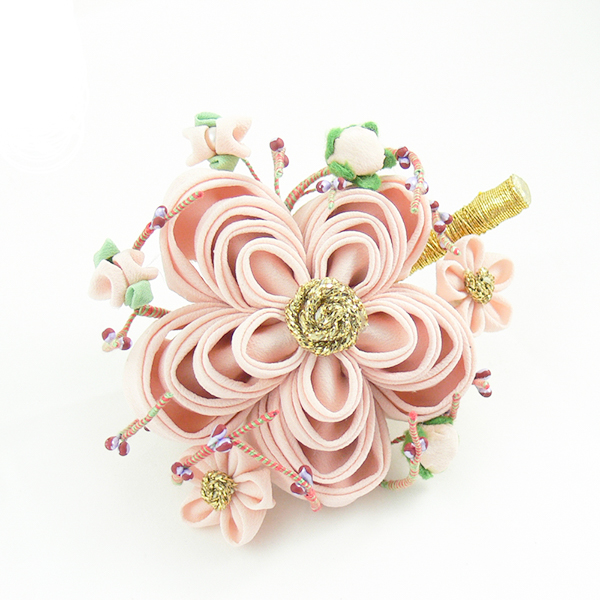
Q2. What are your commitments to your work and what do you care about?
It feels right to know how Tsumami-zaiku is part of a beautiful tradition that goes 200 years back, so I explore the traditional motifs, history and use original materials like rice glue and silk.
I write a lot about the origins of Tsumami-zaiku and give talks whenever I can. This is because I want people to know about the original Japanese technique. Many people see popular tutorials using ribbon and see tsumami zaiku as satin ribbon creations or bows and I want to change this. I believe calling a 200-years-old craft “satin ribbon flowers” is taking away from its history and role in Japanese culture. I feel it being highjacked and remade with no understanding of its’ origins. I want people to see it as an elegant craft with a long history and a rightful and essential place in a beautiful culture.
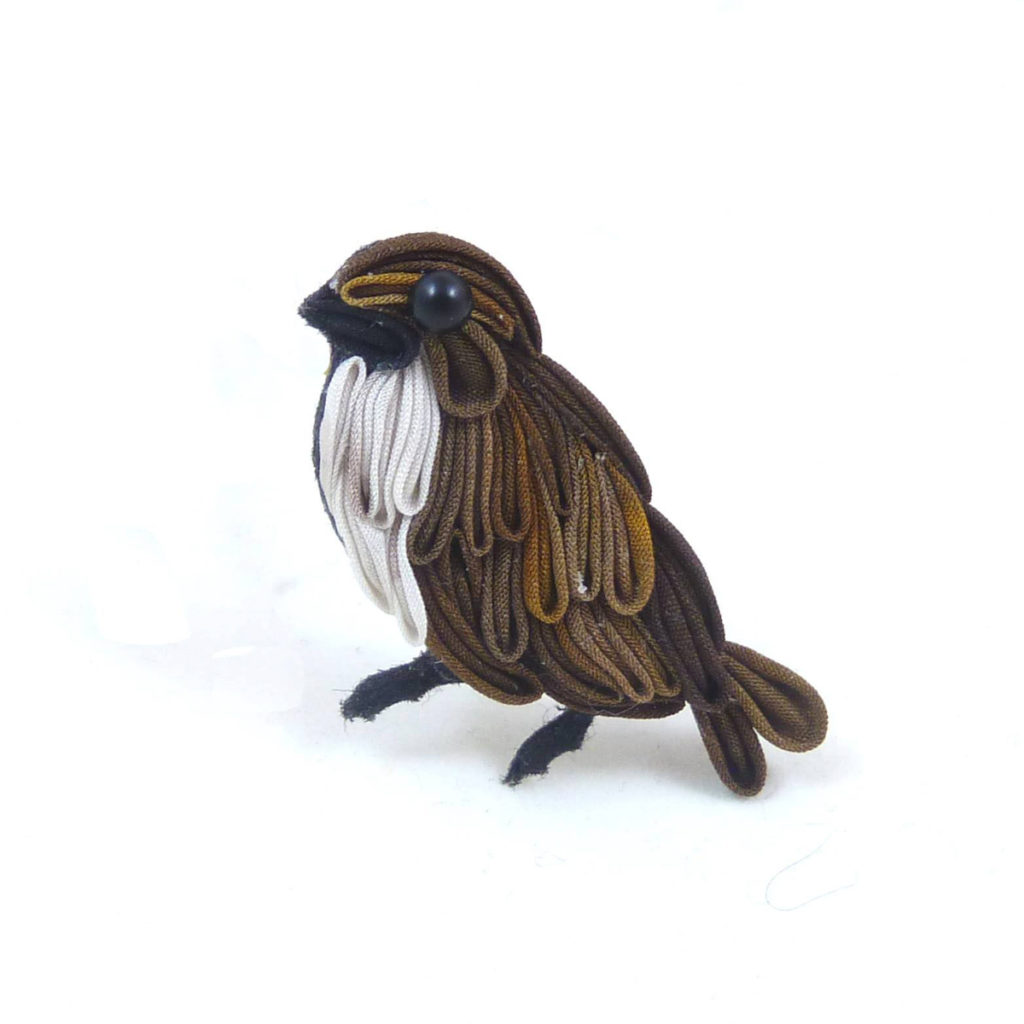
Q3. What is the attractiveness of Tsumami-zaiku for you?
Tsumami-zaiku is one of those crafts that genuinely reflect the sensitivity, taste and a creative mind of the maker. From colours and fabrics to size and style, the maker can show their personality through their works. I love that while the basics of the technique are quite simple, you can use those essential elements and turn them into anything, and only your imagination is the limit. You can make traditional flowers which maiko wear or modern pieces inspired by books and movies. It also involves more than fabric, but also thread, papers, and other materials and textiles, so it pushes one to learn new skills daily.
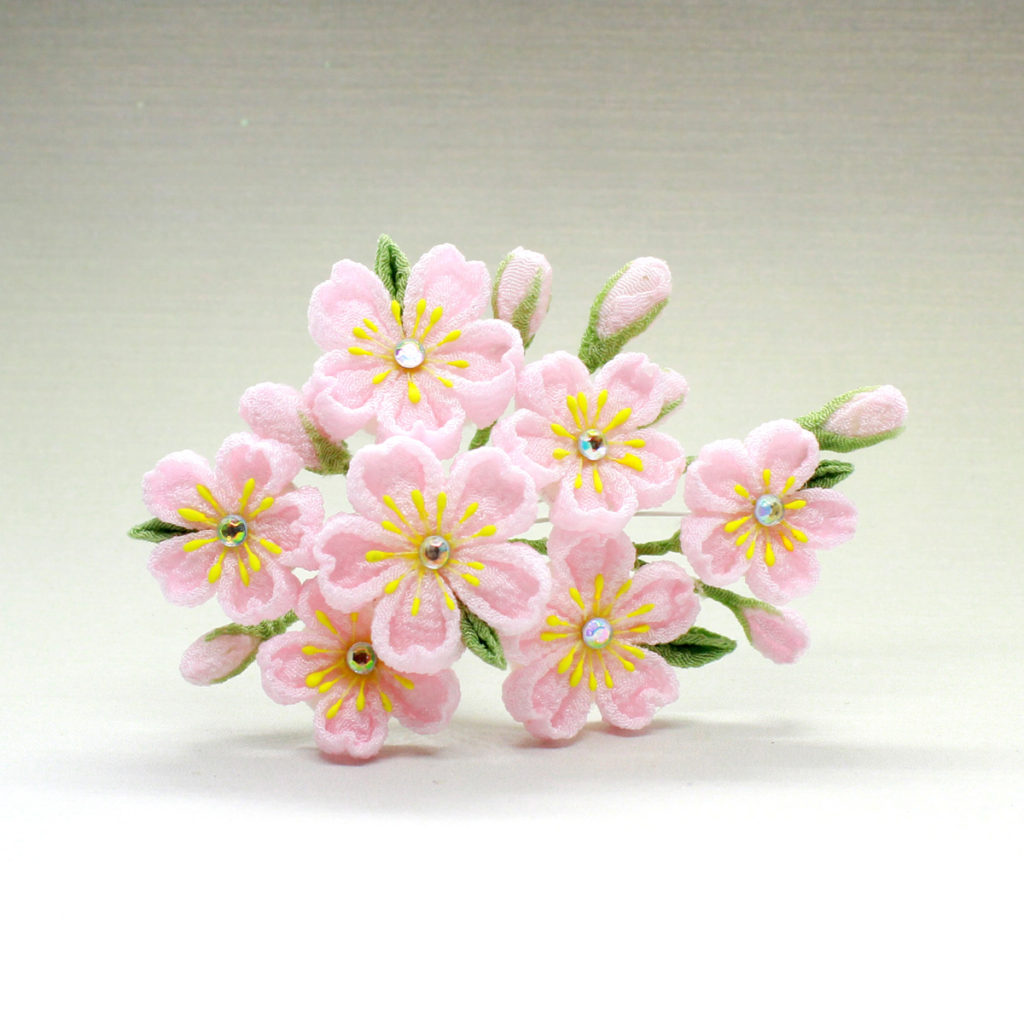
Q4. What do you think about the future possibilities of Tsumami-zaiku?
Tsumami zaiku comes in many forms, and while traditional large pieces for kimono are most impressive, smaller items like brooches and small hair clips are what I love making most. Those smaller items, while not as extravagant and colorful, are items that people can wear as everyday accessories for hair, as brooches, or even as earrings.
Tsumami-zaiku is one of those crafts limited by imagination only, and I see it taking its’ place in modern fashion next to statement jewelry.
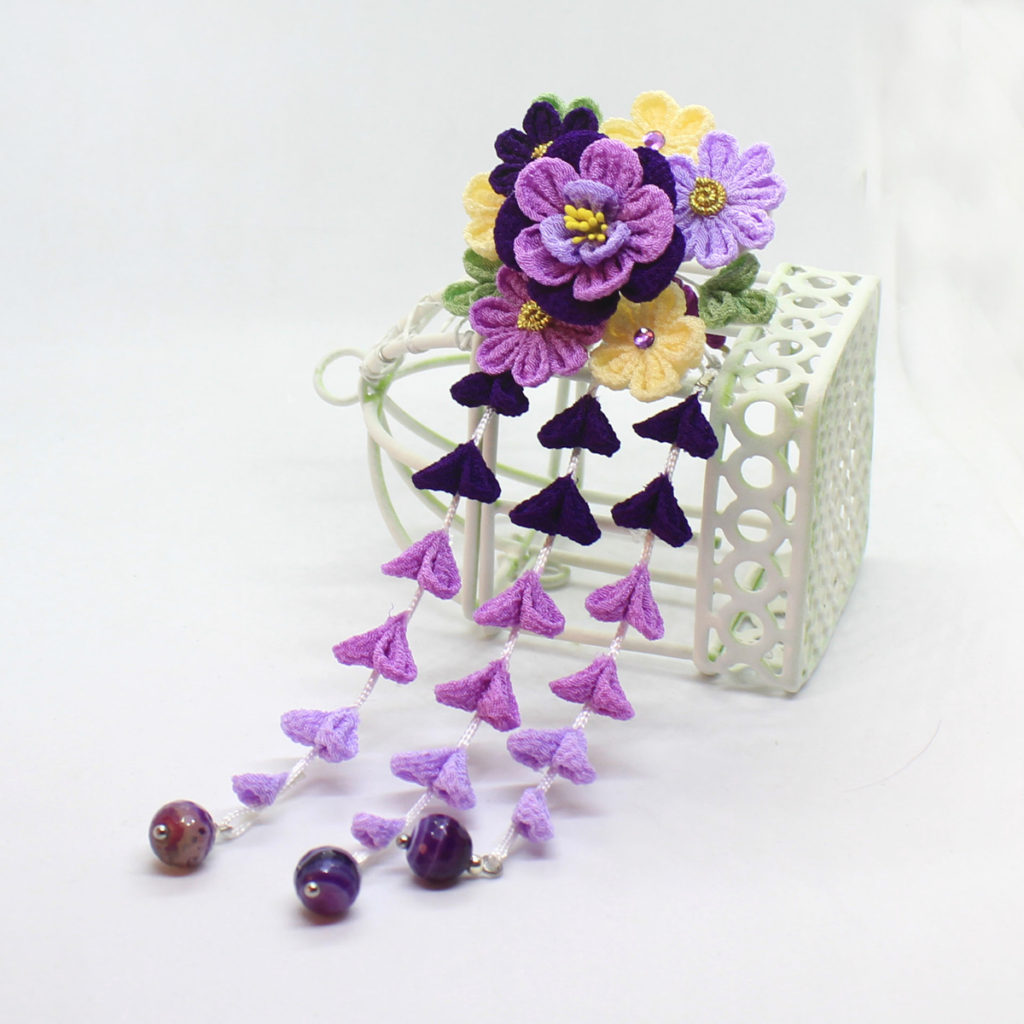
Q5. What do you want to make in the future?
While I enjoy making small items that make tsumami-zaiku accessories available to every enthusiast of Japanese culture, I would love to make more traditional pieces. They push me to learn new things, learn about new materials and the piece I’d love to make is the takarabune (treasure boat said to carry the seven gods of good fortune), kanzashi worn by maiko during sakoku.
I also dream of writing a book about making kanzashi to popularize it and debunk many misconceptions about that is tsumami zaiku.
My genuine wish would be to study with a master artisan in Japan.

Q6. How do you think you can use/arrange or deploy Tsumami-zaiku in your country?
I am very fond of making flowers associated with Polish culture like poppies or cornflowers. It is so much fun to mix Japanese and Polish traditions! I am planning a project called “Flowers of Poland” which will involve making accessories that use flowers connected to Polish culture and accessories inspired by folk costumes.
As people in Poland are very fond of Japanese culture, I would also love to do more workshops or talks which would include the history of the craft. I believe it would draw attention to Japan as the country of origin of the craft and help it find its rightful place in the minds of people in Poland.
